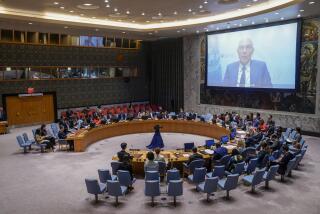N. Korea Discloses Famine’s Heavy Toll
- Share via
BEIJING — Famine and economic collapse cut the life expectancy of North Koreans by more than six years during the 1990s, a senior North Korean official said Tuesday in a rare disclosure.
Death rates for infants and young children climbed while incomes fell by almost half, said a report presented by Deputy Foreign Minister Choe Su Hon to a UNICEF conference in Beijing.
North Korea rarely releases official data, but figures in the report closely resemble outside estimates.
The country has depended on foreign aid to feed its people since 1995, when its agricultural system collapsed after decades of mismanagement aggravated by years of unfavorable weather.
North Korea says 220,000 people died of famine between 1995 and 1998. South Korean and U.S. estimates of deaths range from 270,000 to 2 million.
The report didn’t give specific figures for famine deaths, but it said average life expectancy fell from 73.2 years in 1993 to 66.8 in 1999.
The North Korean population grew by 1.5 million people in the same period to a total of 22.6 million, the report said.
The mortality rate for children under age 5 rose during those years from 27 deaths per 1,000 to 48 per 1,000. The same figure for infants rose from 14 to 22.5 per 1,000 births, the report said.
Meanwhile, North Korea’s per capita gross domestic product slipped from $991 annually to $457, it said.
Choe said a 1995 flood caused $15 billion in damage. International sanctions and the disappearance of trading partners with the fall of the Soviet Union also hurt the economy, he said.
Meanwhile, the percentage of the population with access to safe drinking water fell from 86% in 1994 to just 53% two years later, Choe said.
Malnutrition, dysentery, and vitamin and iodine deficiencies remain serious problems among children, the report said.
The report pledges better cooperation with the international community.
More to Read
Sign up for Essential California
The most important California stories and recommendations in your inbox every morning.
You may occasionally receive promotional content from the Los Angeles Times.













